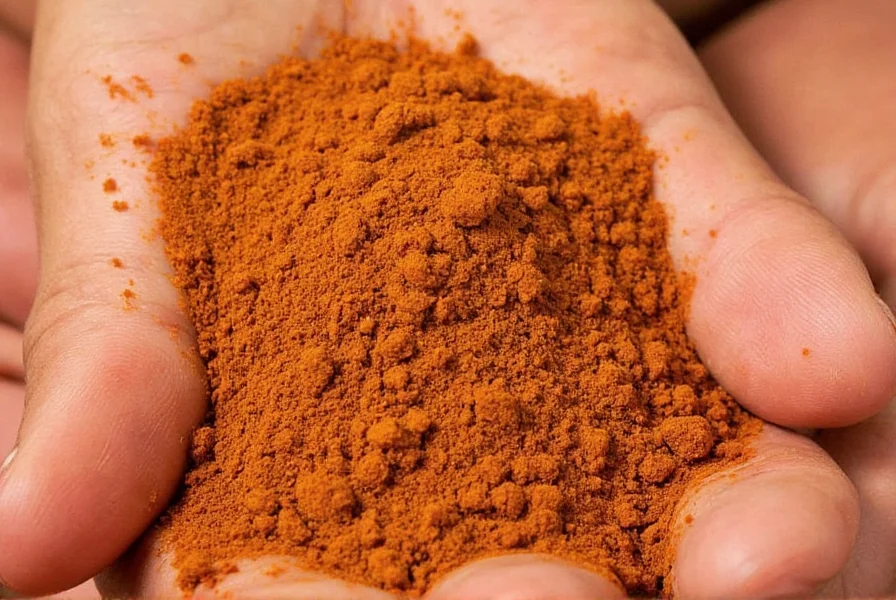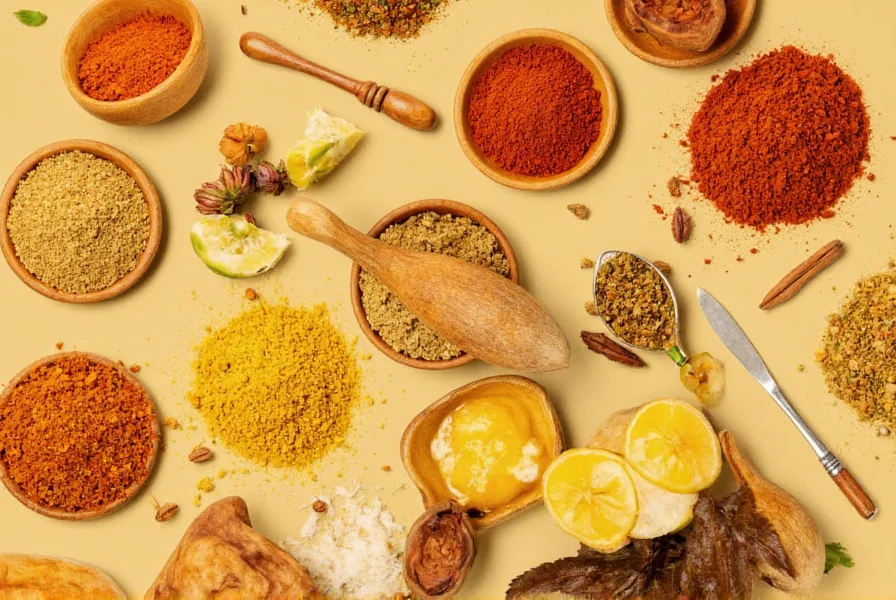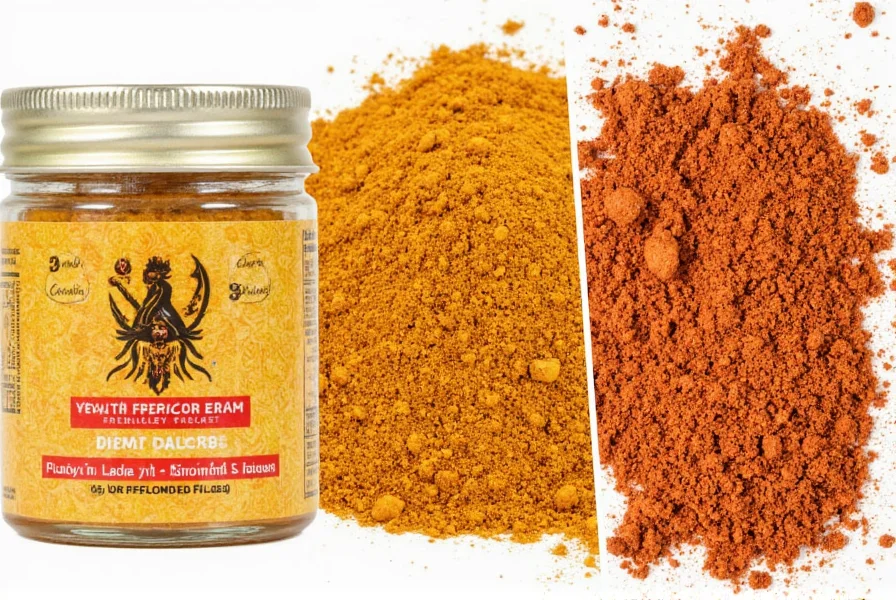Spice Colombo is a French Caribbean spice blend developed during colonial times, often mistaken for curry due to its warm color and aromatic profile. Despite its name, it has no connection to Colombo, Sri Lanka. This unique blend features turmeric, cumin, cinnamon, and cloves, with no chili heat, making it ideal for adding mild, sweet-spiced depth to dishes without overwhelming spiciness.
Whether you're exploring Caribbean cuisine or seeking versatile new flavors for everyday cooking, this guide covers everything you need to know about Spice Colombo: its origins, ingredients, flavor profile, practical uses, buying tips, and answers to common questions.
Table of Contents
- What Is Spice Colombo?
- What Goes Into This Spicy Mix?
- Flavor Profile: Warm, Earthy, and a Bit Mysterious
- How to Use Spice Colombo Like a Pro
- Buying Guide: What to Look For When Picking Colombo
- Frequently Asked Questions About Colombo Spice
- Final Thoughts
What Is Spice Colombo?
Despite its name, Spice Colombo doesn't come from the city of Colombo in Sri Lanka — rather, it's a French Caribbean creation born from colonial spice trade routes. Think of it as the West Indies' answer to Indian curry powders.
This golden-yellow seasoning is widely used in Martinique, Guadeloupe, and other French Caribbean islands. It's often compared to Indian curry but has a lighter, more delicate flavor with a focus on turmeric, cumin, and clove.
Historical Background
- Created during French colonial rule using spices from India and Southeast Asia.
- Named after the city of Colombo in Sri Lanka, though it has no direct culinary ties.
- Now a staple in Creole cuisine across the Caribbean.
What Goes Into This Spicy Mix?
The exact composition varies by brand or region, but most versions of Colombo include:
| Core Ingredients | Description | Role in the Blend |
|---|---|---|
| Turmeric | Earthly warmth, bright yellow color | Gives it that iconic hue and grounding flavor |
| Cumin | Earthy, slightly bitter | Adds depth and richness |
| Cinnamon | Sweet and woody | Brings balance and warmth |
| Clove | Sharp, sweet | Intensifies aroma and adds complexity |
| Fennel Seed | Mildly licorice-like | Provides subtle sweetness |
| Nutmeg | Warm, nutty | Enhances creaminess and richness |
Optional Add-Ons
- Coriander seed
- Mustard seed
- Allspice
- Black pepper
Some blends may also include dried herbs like thyme or marjoram for an extra layer of green freshness.
Flavor Profile: Warm, Earthy, and a Bit Mysterious
If Curry is the confident, loud uncle at the dinner table, Colombo is the quiet intellectual who surprises you with depth and nuance.
It's warm without being spicy-hot. Earthy but not overpowering. Slightly sweet thanks to cinnamon and clove, but balanced by the bitterness of cumin and fennel. Overall, it's a harmonious blend that enhances without dominating.
Colombo vs Curry: A Quick Comparison
| Characteristic | Colombo | Indian Curry Powder |
|---|---|---|
| Origin | French Caribbean | South Asia |
| Heat Level | Mild to moderate | Moderate to high |
| Primary Notes | Earthy, sweet-spiced, floral | Pungent, smoky, fiery |
| Color | Bright yellow-orange | Deep golden-brown |
How to Use Spice Colombo Like a Pro
Colombo shines when paired with proteins and starchy veggies. Here are some of our favorite ways to make the most of it:
1. Spice Up Chicken
- Rub onto chicken thighs before roasting or grilling.
- Add to chicken stew or coconut milk-based dishes.
2. Boost Root Veggies
- Toss carrots, sweet potatoes, or yams with oil and Colombo before roasting.
- Make spiced mashed potatoes for a creamy, fragrant side dish.
3. Stir Into Rice & Grains
- Add a teaspoon to rice while cooking for a colorful pilaf.
- Mix into couscous or quinoa for exotic flair.
4. Elevate Soups & Stews
- Stir into lentil soups or chickpea stews.
- Add to vegetable broths for warmth and depth.
5. Make a Signature Sauce
- Mix with yogurt or sour cream for a quick dipping sauce.
- Combine with mayonnaise and a squeeze of lime for a sandwich spread.
Buying Guide: What to Look For When Picking Colombo

Whether you're shopping online or browsing the spice aisle, here's how to choose the best Colombo blend for your kitchen:
1. Check the Ingredient List
- Avoid products with fillers like cornstarch or artificial colors.
- Look for whole spices ground fresh — they'll last longer and retain more flavor.
2. Choose Based on Intended Use
| Product | Features | Best For |
|---|---|---|
| Premier Colombo Blend – Island Spice Co. | Bold, aromatic, with added marjoram | Roasts, stews, marinades |
| Caribbean Gold Colombo Seasoning | Mild, balanced, ideal for beginners | Rice, sauces, veggie dishes |
| Homemade Colombo Mix | You control ingredients and heat level | Custom recipes, experimenting chefs |
3. Buy in Small Quantities
- Spices lose potency over time — buy only what you'll use within 6 months.
- Store in airtight containers away from light and moisture.
4. Try Making Your Own!
DIY Colombo is easy and fun. Start with this base:
- 2 tbsp turmeric
- 1 tbsp ground cumin
- 1 tsp cinnamon
- ½ tsp nutmeg
- ¼ tsp cloves
- 1 tsp coriander (optional)
- 1 tsp fennel (optional)
Mix well and store in a jar. Adjust ratios based on your taste preferences!
Frequently Asked Questions About Colombo Spice

What is Colombo spice and where does it originate from?
Colombo spice is a French Caribbean creation developed during colonial times, despite its name suggesting Sri Lankan origins. It was created using spices from India and Southeast Asia but adapted to Caribbean tastes. Unlike what many believe, it has no direct connection to the city of Colombo in Sri Lanka. Today, it's a staple seasoning in Martinique, Guadeloupe, and other French Caribbean islands.
Is Colombo the same as curry powder?
Nope! While both have warm, earthy notes, Colombo is generally milder and contains more cinnamon and clove than traditional Indian curry powders. Plus, Colombo lacks chili peppers, making it naturally less spicy. The color is typically brighter yellow-orange compared to curry powder's deeper golden-brown hue.
What are the main ingredients in authentic Colombo spice?
The core ingredients of Colombo spice typically include turmeric (for color and earthiness), cumin (for depth), cinnamon (for sweetness), clove (for aromatic complexity), fennel seed (for subtle sweetness), and nutmeg (for warmth). Some variations may include coriander, mustard seed, allspice, or dried herbs like thyme for additional flavor dimensions.
How spicy is Colombo seasoning compared to other spice blends?
Colombo is notably milder than most curry powders and Jamaican jerk seasoning. It's warm and aromatic without significant heat—most commercial blends don't contain chili peppers at all. The heat level is generally mild to moderate, deriving warmth from spices like cumin and black pepper rather than actual heat from chilies. This makes it accessible to those who enjoy flavor without intense spiciness.
Can I substitute Colombo for curry powder in recipes?
You sure can, but keep in mind the flavor will be different — Colombo will offer a sweeter, subtler warmth compared to curry's boldness. If substituting in non-Caribbean recipes, use about 25% less initially and adjust to taste, as Colombo has a more delicate profile. It works particularly well in dishes where you want flavor without overwhelming heat.
What dishes work best with Colombo spice?
Colombo shines with proteins and starchy vegetables. It's exceptional with chicken (especially in stews or roasted dishes), root vegetables like sweet potatoes and carrots, rice and grain dishes, legumes in soups and stews, and in creamy sauces made with coconut milk or yogurt. Caribbean cooks traditionally use it in dishes like Colombo chicken, fish Colombo, and vegetable gratins.
How should I store Colombo spice to maintain its freshness?
Store Colombo spice in an airtight container away from direct light, heat, and moisture. Properly stored, it will retain optimal flavor for 6-12 months. Avoid keeping spices above the stove or in clear containers on open shelves. For maximum freshness, buy in small quantities and consider making your own blend as needed, as pre-ground spices lose potency faster than whole spices you grind yourself.
Can I make my own Colombo spice blend at home?
Absolutely! Making your own Colombo blend lets you control the freshness and adjust flavors to your preference. Start with 2 tablespoons turmeric, 1 tablespoon cumin, 1 teaspoon cinnamon, ½ teaspoon nutmeg, ¼ teaspoon cloves, plus optional additions like coriander and fennel seeds. Toast whole spices before grinding for deeper flavor, then store in an airtight container. You can adjust ratios to create a milder or more intense blend based on your taste preferences.
Final Thoughts
Spice Colombo is more than just a colorful addition to your spice rack — it's a passport to the Caribbean's vibrant culinary traditions. Whether you're new to world spices or a seasoned home chef, Colombo offers a versatile, aromatic way to elevate everyday meals.
So go ahead — open that jar, sprinkle it liberally, and let the flavors transport you to sun-drenched islands and tropical breezes. Because life is too short for bland food.











 浙公网安备
33010002000092号
浙公网安备
33010002000092号 浙B2-20120091-4
浙B2-20120091-4